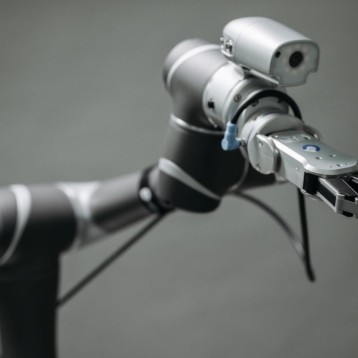Seagliders have been developed at UW since 1995. Each is 1.8 m long and weighs 52kg, thus enabling an easy launch and recovery of it using a small boat and no more than two people. A Seaglider has a low drag shape thanks to the fiberglass surrounding the cylindrical hull, which is composed of a series of arched anodized aluminum panels separated by ring frames. The hull compresses as it sinks, matching the compressibility of seawater. Additionally, it uses a buoyancy-based propulsion system which reduces the vessel’s energy consumption.
Seagliders can reach a maximum diving depth of 1000m, and travel slopes that are even as steep as 3:1, when it needs to maintain its position. As it dives, its wings cause it to glide, thus allowing horizontal movement. Depth, heading, and attitude are monitored via its internal sensors, while the external sensors continue to scan the ocean in order to determine water properties.
After diving, this autonomous vehicle raises an antenna out of the water in order to use GPS tracking to determine its location. Then, it uses an Iridium data telemetry satellite to call in and upload the data it has collected, as well as download a file with new instructions.
The Seagliders reached a few remarkable milestones in the twelve years they have been operating: not only were they the first to complete a 3800km mission, but were also the first to set a record by completing a long duration of more than seven months at sea between 2004 and 2005. In addition, they were the first to conduct multi-glider missions.
These vehicles have many possible applications: physical, chemical, and biological oceanography, tactical oceanography, maritime reconnaissance, and as communication gateways as well as navigational aids. “More than 70 Seagliders have been delivered and many are currently in operation all over the world. Recent deployments include waters off Norway, Greenland, Taiwan, the Philippines and Iceland,” explains UW.
TFOT recently covered the “Thermal Glider” – an autonomous underwater vehicle powered by ”green” energy. This robotic glider propels itself using the temperature differences in the ocean’s waters as an energy source. It is the first environmentally powered robotic vehicle to have stayed at sea for a an extended period of time.
More information on the Seagliders can be found APL-UW’s official website.










